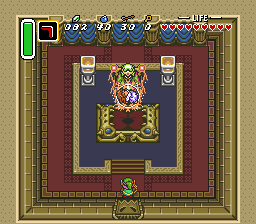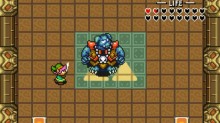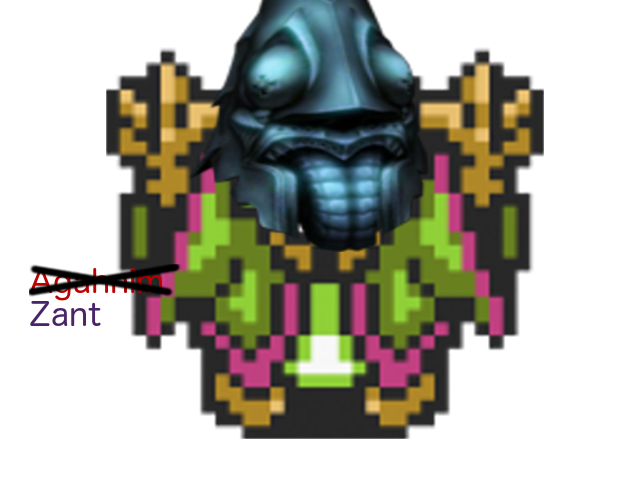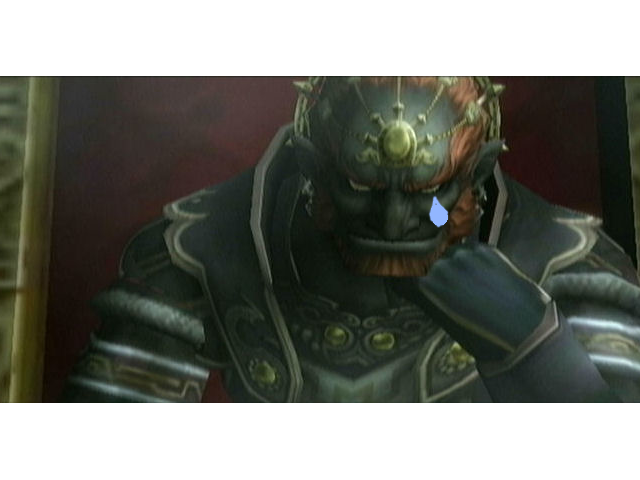Twilight Princess, A Link to the Past, and the Villain Bait-and-Switch
Posted on November 23 2014 by Mark Olson
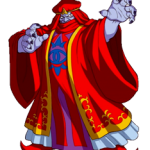 Zelda has one big baddie who tends to rule them all: Ganon. Sometimes he does this quite literally. It isn’t uncommon to play through a Zelda game only to find out in the last act that the villain you were fighting the whole time was just a puppet in Ganon’s evil schemes, for better or for worse.
Zelda has one big baddie who tends to rule them all: Ganon. Sometimes he does this quite literally. It isn’t uncommon to play through a Zelda game only to find out in the last act that the villain you were fighting the whole time was just a puppet in Ganon’s evil schemes, for better or for worse.
The first instance of this can be found in A Link to the Past. In the game’s introduction, we are told that we are to fight Agahnim, the former court wizard of Hyrule, who is sacrificing maidens throughout the land, and that Zelda is the next target. One thrilling princess-rescue and a couple of dungeons later, true gravity is added to your fight against evil when the kindly priest at the Sanctuary is killed by Agahnim’s hand and Zelda is recaptured and led to whatever vile fate Agahnim has in mind for her.
The hero does battle with Agahnim, and, after his defeat, is drawn into the dark world. Anyone who has played games such as Twilight Princess prior would expect this to be when Ganon’s true form is revealed. A Link to the Past holds off, however. Throughout the next seven dungeons, subtle and not-so-subtle (a dungeon called “Ganon’s Tower”, anyone?) hints are dropped as to the true identity of your prey. Despite all this, Agahnim is still the antagonist of the game up until its final minutes, when Ganon shrugs off his disguise to meet the hero blade-to-blade.
The fight with Ganon is wonderful; it’s challenging and intense, though, to be fair, that could be said about every boss battle other than the games of energy tennis that were played with Agahnim. The fact that Ganon is so much more powerful than Agahnim really lends itself well to the bait and switch. The player can buy that Agahnim would be under the control of Ganon.
On the whole, this works decently. It could’ve been better, sure, but it manages to give players a final fight against the incredibly intimidating Ganon without sacrificing Agahnim as a character (somehow). Agahnim isn’t less intimidating on repeat playthroughs because he is just a pawn in another’s schemes.
Ganon was just kind of there, but one must keep in mind that, when the game was made, Ganon didn’t have much of a motive. Unlike his later incarnations, the Ganon of the earliest games was a primal beast as opposed to anything that could resemble a humanoid character. I think that this fact works to the advantage of the game. Ganon doesn’t have to be set up as a genius; if he has a strong and difficult fight, he’s fine. That was all that was required to make him a credible successor to Agahnim.
A Link to the Past brings up a couple of interesting points about Zelda that could be good or bad, depending on where you stand. For one thing, A Link to the Past was the game which set the precedent of Ganon making an appearance in nearly every entry in the series. There need to be three entries for a pattern to first take shape, and, in the first three games in the Zelda franchise, Ganon was the one orchestrating the entire nefarious affair.
If you played the Zelda series in order, without prior knowledge on the games that you haven’t played yet, the fact that Ganon will be involved in each game truly becomes apparent here. In A Link to the Past, we are given a perfectly serviceable villain in the form of Agahnim who later falls by the wayside for Ganon. This can, at first, be seen as an attempt to introduce a new antagonist to meet Link’s blade, but turns out to be a placeholder for the true villain of the game.
Nintendo pulled this move right out of A Link to the Past and pasted it almost note-for-note into Twilight Princess, with a few name changes.
The player’s first introduction to Zant comes near the beginning of the game, when Princess Zelda treats us with a gorgeous cutscene giving players their first glimpse of the usurper king; the man who single-handedly brought a kingdom to its knees and submerged its inhabitants into twilight. A few dungeons later, Link and Midna come face-to-face with Zant for the first time. In a mere few seconds, Zant undoes all that the player has done and critically wounds Midna.
Zant’s backstory and character were set up perfectly in the first act of the game that I lamented his loss when Ganon stepped out from behind the curtain. The formerly collected Zant, the one who unraveled all of Link and Midna’s work with a wave of his hand, begins to pound at the ground like a three year old whose sister just at the last cookie. Zant becomes deranged, but to the point where he can’t be taken seriously.
Why did it work in A Link to the Past and not here, though?
The bait-and-switch’s failure in Twilight Princess is, in my eyes, a casualty of Zelda stories becoming increasingly in-depth. As the series has grown in length, its characters have been subject to the newfound (and relative) complexity of the game’s narratives. The villains of the series, in particular, has been subject to most of the changes.
Whereas in the earlier games in the series Ganon was pure animal, Ocarina of Time introduced players to his humanoid form, Ganondorf. With a humanoid shape, Ganon also assumed a humanoid mind. Though his Ocarina of Time incarnation had a rather basic motivation (power), and all his later versions had a driving force based off of this, The Wind Waker introduced an unforeseen complexity to the character. The Ganon of the cell-shaded era was far more sympathetic and less evil than his earlier counterparts.
The need for a new depth in characters built up. As a result, Zant had one of the most incredible backstories yet seen in a Zelda game; he was a character who could have successfully been the villain of a great number of games and not just the first part of his one.
However, it was not to be. Ganon was, as in A Link to the Past revealed to be the game’s true villain, made into an incredible final boss, and Zant was left by the wayside.
The switch in A Link to the Past affects Agahnim far less than other villains who have undergone this treatment. Agahnim isn’t less menacing on later playthroughs, even though you know that he’s just a placeholder for Ganon. Agahnim seems to be more of a servant than a pawn, and as a result keeps his cool when defeated. Contrast this with Zant from Twilight Princess, who goes absolutely berserk when it comes time for Ganon to be revealed.
With earlier games in the series, villains didn’t have room for a deep character because the cartridges didn’t have room for deep characters. All of the villains were the stoic, quiet-type because they didn’t want to waste memory on making them anything other than the stoic, quiet-type.
When a villain like Agahnim was forgotten about for the final boss battle, there was very little to forget about him. The introduction wasted no time in establishing Agahnim as anything other than the evil court-wizard.
When Twilight Princess came out, though, an interesting villain was the standard. The player spent time getting to learn about who Zant was and see him in action. When all of this was wasted for Ganon, that meant that our time at the beginning of the game was also wasted.
The bait-and-switch is a rather antiquated trope, and it becomes far harder to pull off and make believable in games that are structured and written like the new game that they are.
What do you think about the villain swap? Did you like how Twilight Princess did it but not how A Link to the Past did? Though I didn’t get to them, A Link Between Worlds and Skyward Sword both used this maneuver as well. I absolutely adore reading comments, so let me know what you think.



